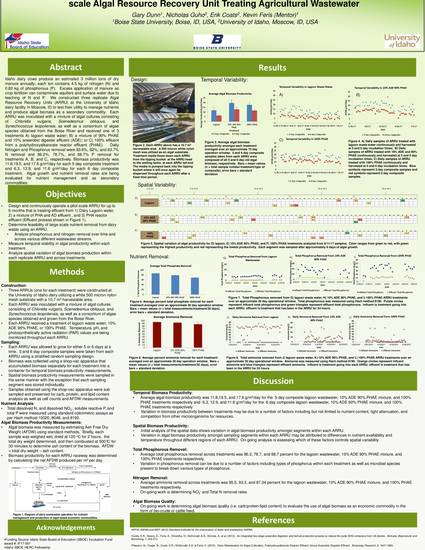
Idaho dairy cows produce an estimated 3 million tons of dry manure annually; each ton contains 4.5 kg of nitrogen (N) and 0.82 kg of phosphorous (P). Excess application of manure as crop fertilizer can contaminate aquifers and surface water due to leeching of N and P. We constructed three replicate Algal Resource Recovery Units (ARRU) at the University of Idaho dairy facility in Moscow, ID to test their utility to manage nutrients and produce algal biomass as a secondary commodity. Each ARRU was inoculated with a mixture of algal cultures consisting of Chlorella vulgaris, Scenedesmus obliquus, and Synechococcus leopoliensis, as well as a consortium of algae species obtained from the Boise River and received one of 3 treatments A) lagoon waste water; B) 100% effluent from a polyhydroxyalkanoate reactor effluent (PHAE); or C) a mixture of 90% PHAE and 10% anaerobic digester effluent (ADE). Daily Nitrogen and Phosphorus removal were 83.6%, 82%, and 83.7% N removal and 96.6%, 86%, and 95.8% P removal for treatments A, B, and C, respectively. Biomass productivity was 10.37, 19.13, and 18.9 g/m2/day for each treatment. Algal growth and nutrient removal rates are being evaluated for nutrient management and as secondary commodities.
Available at: http://works.bepress.com/kevin_feris/26/
